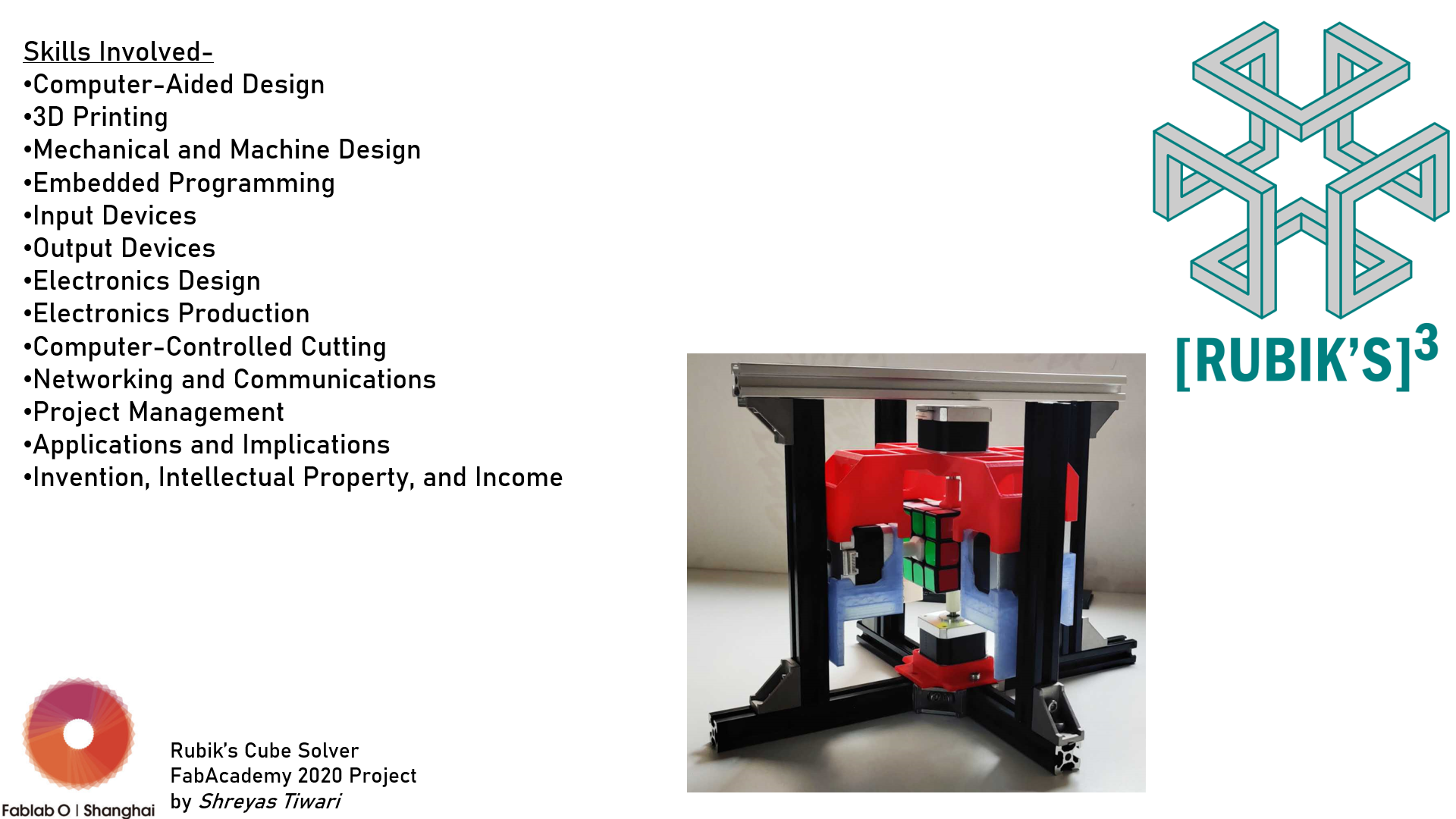Invention, Intellectual Property and Income
Tasks for this week:
- Develop a plan for dissemination of your final project.
- Prepare drafts of your summary slide (presentation.png, 1920x1080) and video clip (presentation.mp4, 1080p HTML5, < ~minute, < ~10 MB) and put them in your root directory.
Part 1- Dissemination of my Final Project
This project does not have any significant applications that can fulfill a need in the real world. The only purpose that its functions can serve is to interactively teach people how to solve the Rubik's cube. I don't intend to create a product out of this, but I would be happy with people re-creating my design and potentially improving it as well.
My main medium of sharing this project that I am developing would be through my school, where it can be used as an example to encourage more students to take an interest in STEM. Apart from this, I might make an instructable, or my own style of a complete guide to replicating my project. This would include the process, the schematics, any tips and advice, and common errors that I made to look out for.
Besides this I would be hapy to share the project with the community of the FabLabs. With a network exposure from the Fablabs, the project might be re-created and developed further.
The project of a Rubik's cube solving machine has pre-existed, therefore I cannot claim to place a copyright on the concept.
In terms of the Intellectual Property regarding this project, I reviewed all 6 Creative Commons Licenses, as they are a free method of protecting your projects. I decided that I want my project to be only partially open-source, which means that other people can develop it. I strongly believe that the success in this project is people contributing with improvements of their own. However, I did want to create a restriction on the commercial leniency. I do understand the implications that this restriction would place on the diffusion of this project, but there may be a valuable future commercial opportunity yet to be revealed to me.

Rubik's Cubed by Shreyas Tiwari is licensed under a Creative Commons Attribution-NonCommercial-ShareAlike 4.0 International License.
My decision to choose the Creative Commons licenses is because it is something I’ve heard commonly, before learning about the different types of licenses, therefore I presume that most people who might decide to work on this project will also be aware of the terms & conditions involved.
My motivation behind this project is purely for fun. As I mentioned earlier, there may not be any real-life applications of this project with its restricted functions. Currently, I don't see any income source from this project, the only alternative that I considered was creating a highly detailed guide to replicating the project, and selling that guide for some income. Perhaps this project might transform into a assembly kit and sold through the support of the Fab Market. Instead of selling the machine assembled, in kit form, the product may be more desirable as it can allow younger people to be more involved in STEM through all the skills involved, however, they can still make the project if they don't have access to large machinery in FabLabs as the core parts are pre-produced.
Update- I have since changed my mind about the Non-Commercial factor in the license, and this project will be completely open-source. An interesting discussion raised the following valid points:
- Why would anyone contribute and maybe spend money in research and development if they cannot get anything in return?
- The share-alike license then ensure that if they make their own version using your project, they still have to share everything they added. Other people can make money based off my idea, but in return I recieve their additional work, research and development for free.

Rubik's Cubed by Shreyas Tiwari is licensed under a Creative Commons Attribution-ShareAlike 4.0 International License.
Part 2- Draft Video and Slide

This page will be updated soon.
Update:
Final Presentation Video